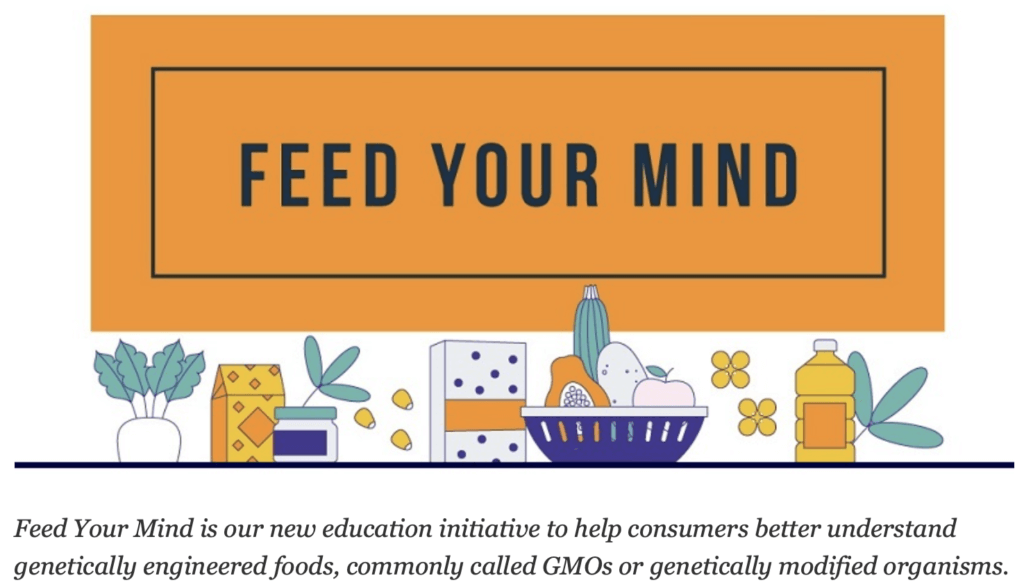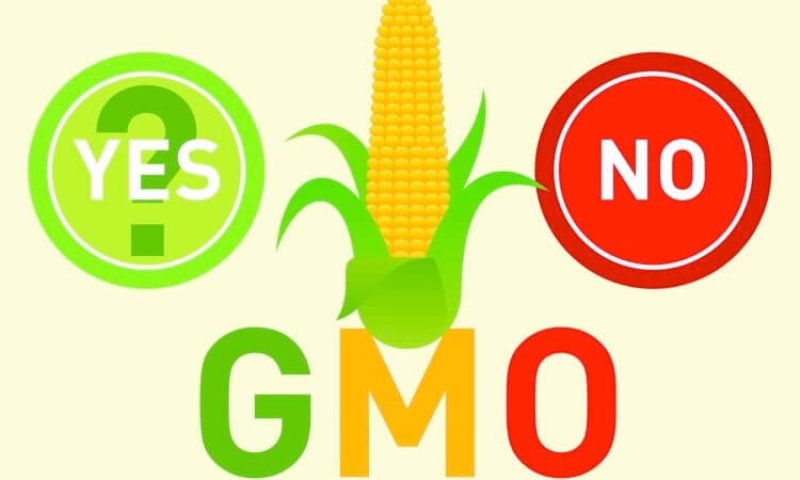FDA launches “Feed Your Mind” website to educate about GE foods
On March 4, the Food and Drug Administration (FDA) launched its “Feed Your Mind” website, which is the first public-facing product from the $7.5 million that Congress appropriated starting in 2017 for an agricultural biotechnology education and outreach initiative. According to the FDA, the initiative’s goal is to “share science-based information that educates, informs and broadens understanding about agricultural biotechnology for consumers.” Congress (and the special interests that lobbied for the appropriation) clearly intended to use the authoritative voice of the FDA to increase consumer understanding of agricultural biotechnology and correct misconceptions and misinformation.
The initiative’s website includes fact sheets, infographics and videos. It will be followed later this year and in 2021 by additional materials for middle school classrooms, resources for health professionals and consumer materials.

In reviewing “Feed Your Mind,” one finds information that is scientifically accurate (with reliable references) and relatively easy for a non-scientist to understand. If you know nothing about GMOs and read the website’s contents, you will clearly be better informed about what GMOs are, although not necessarily about why GMOs have been so controversial. The question that remains is how this website (which is not easy to find from the FDA’s homepage, nor does it quickly appear when entering basic questions about GMOs into an internet search engine) will educate a significant segment of American consumers.
Will the FDA promote the website and its materials through an ad campaign? Will they send emails or postcards to Americans telling them to visit the website? I cannot imagine that the average American consumer visits FDA’s website with any great frequency. One can reasonably assume that the number of consumers who will search for the “Feed Your Mind” website, even if they know it exists, will be extremely small. So far, the FDA has only announced the website to its list of stakeholders. Much more outreach will be needed if the information they have generated is to have the impact Congress intended
GE crops on Natural Wildlife Refuges (NWR)
On March 19, the Department of Interior’s Fish and Wildlife Service (FWS) announced that it had completed a draft Programmatic Environmental Assessment (PEA) to assess the use of GE crops for natural resource management in the National Wildlife Refuge System. The public comment period on the PEA ended April 19.
Let’s explain how we got here. Currently, the FWS leases approximately 28,000 acres of refuge land in the Southeast to farmers who grow primarily corn, soybeans and rice. In those contracts, farmers agree not to harvest 25 percent of their crop so it can be left as food for waterfowl and other animals that the refuges support. Agricultural fields also maintain open habitat to support wildlife and control invasive species. Contract farmers utilized GE crops until 2012, when a lawsuit stopped the practice pending a PEA in compliance with the National Environmental Policy Act (NEPA). This PEA is the result of that process.
The PEA covers 10 states and two territories in the Southeastern US and recommends a policy that would allow GE crops to be grown on NWR land. The PEA compares the period before 2012 (with GE crops) and after 2012 (without them). They find that pesticide use (pounds of active ingredient) increased 68 percent after farmers stopped growing GE crops in 2012 and the number of active ingredients increased 76 percent. Other facts supporting the PEA’s conclusion that GE crops should be allowed include findings that the workload of NWR staff was less when farmers used GE crops and farmers had increased yields. Finally, they found that using GE crops was consistent with the FWS’s Integrated Pest Management Policies.
Farmers in the US have grown GE crops for more than 20 years, reaping their benefits, such as reduced insecticide use on corn and cotton crops, while managing their risks (although not always well). If those same GE crops can be beneficial to farmers growing crops on NWR lands without demonstrable risk, as the PEA appears to show, then it seems like they should be permitted to plant them.
After reviewing the comments received, the FWS will issue a final PEA. But the process does not end there. The PEA is necessary, but not sufficient in itself to permit GE crops to be grown in NWRs. Next, individual refuges in the Southeastern region can conduct their own site-specific analysis to determine whether to authorize their farmers to use a GE crop.
Now that you’re caught up on the latest in agricultural biotechnology, stay tuned for additional developments we expect in the coming weeks. These include the US Department of Agriculture’s revisions to 7 C.F.R. Part 340 addressing its oversight of GE organisms that might be plant pests, and the Environmental Protection Agency’s proposal on how its regulation of plant-incorporated protectants will apply to genome-edited crops.
This article originally ran at the Cornell Alliance for Science and has been republished here with permission. Follow the Alliance for Science on Twitter @ScienceAlly.































